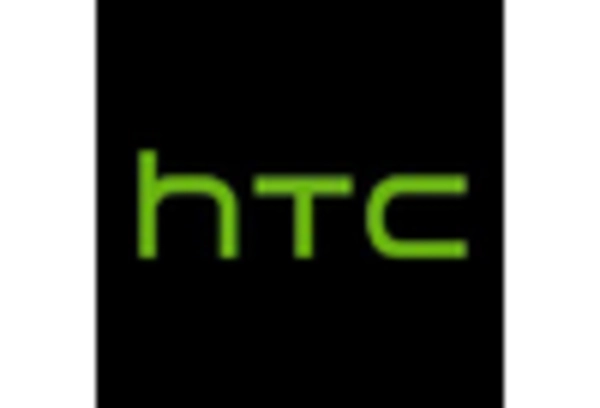Focus on Skill Development
The e learning-virtual-reality market is increasingly aligned with the growing emphasis on skill development in the GCC. As industries evolve, there is a pressing need for a workforce equipped with relevant skills. VR training programs can provide hands-on experience in a safe environment, which is particularly beneficial for sectors such as healthcare, engineering, and hospitality. Reports indicate that companies investing in VR training solutions have seen a 40% improvement in employee performance. This focus on skill enhancement is driving the demand for VR applications in the e learning-virtual-reality market, as organizations seek innovative ways to train their employees effectively.
Increased Investment in EdTech
The e learning-virtual-reality market is witnessing a significant influx of investment in educational technology (EdTech) within the GCC. Governments and private investors are recognizing the potential of VR to transform traditional learning methods. In 2025, EdTech investments in the region are expected to reach $1 billion, with a substantial portion allocated to VR initiatives. This financial support is likely to accelerate the development of VR content and platforms, enhancing the overall quality of educational offerings. As more resources are directed towards the e learning-virtual-reality market, it is anticipated that the accessibility and effectiveness of VR learning solutions will improve, attracting a broader audience.
Growing Awareness of VR Benefits
The e learning-virtual-reality market is experiencing growth driven by increasing awareness of the benefits of VR in education and training. Stakeholders, including educators, corporate trainers, and learners, are becoming more informed about how VR can enhance engagement and retention. Studies suggest that learners using VR are 70% more likely to retain information compared to traditional methods. This heightened awareness is prompting educational institutions and businesses in the GCC to explore VR solutions, thereby expanding the e learning-virtual-reality market. As the understanding of VR's advantages continues to spread, it is likely that adoption rates will increase, further solidifying the market's position in the educational landscape.
Technological Advancements in VR
The e learning-virtual-reality market is experiencing a surge due to rapid technological advancements in virtual reality (VR) hardware and software. Innovations such as improved graphics, enhanced interactivity, and more immersive experiences are making VR applications more appealing to educational institutions and corporate training programs. In the GCC, the market for VR technology is projected to grow at a CAGR of 30% from 2025 to 2030, indicating a strong demand for VR solutions in education. As institutions adopt these technologies, the e learning-virtual-reality market is likely to expand, providing learners with engaging and effective educational experiences. Furthermore, the integration of artificial intelligence with VR is expected to personalize learning, making it more relevant and impactful for students.
Rising Demand for Remote Learning
The e learning-virtual-reality market is benefiting from the increasing demand for remote learning solutions across the GCC. As educational institutions and businesses seek to provide flexible learning options, VR offers a unique approach to remote education. The immersive nature of VR can simulate real-world environments, allowing learners to engage in practical experiences from the comfort of their homes. This shift towards remote learning is reflected in a 25% increase in the adoption of e learning platforms in the region. Consequently, the e learning-virtual-reality market is positioned to capitalize on this trend, as more organizations recognize the value of VR in delivering effective remote training and education.

















Leave a Comment